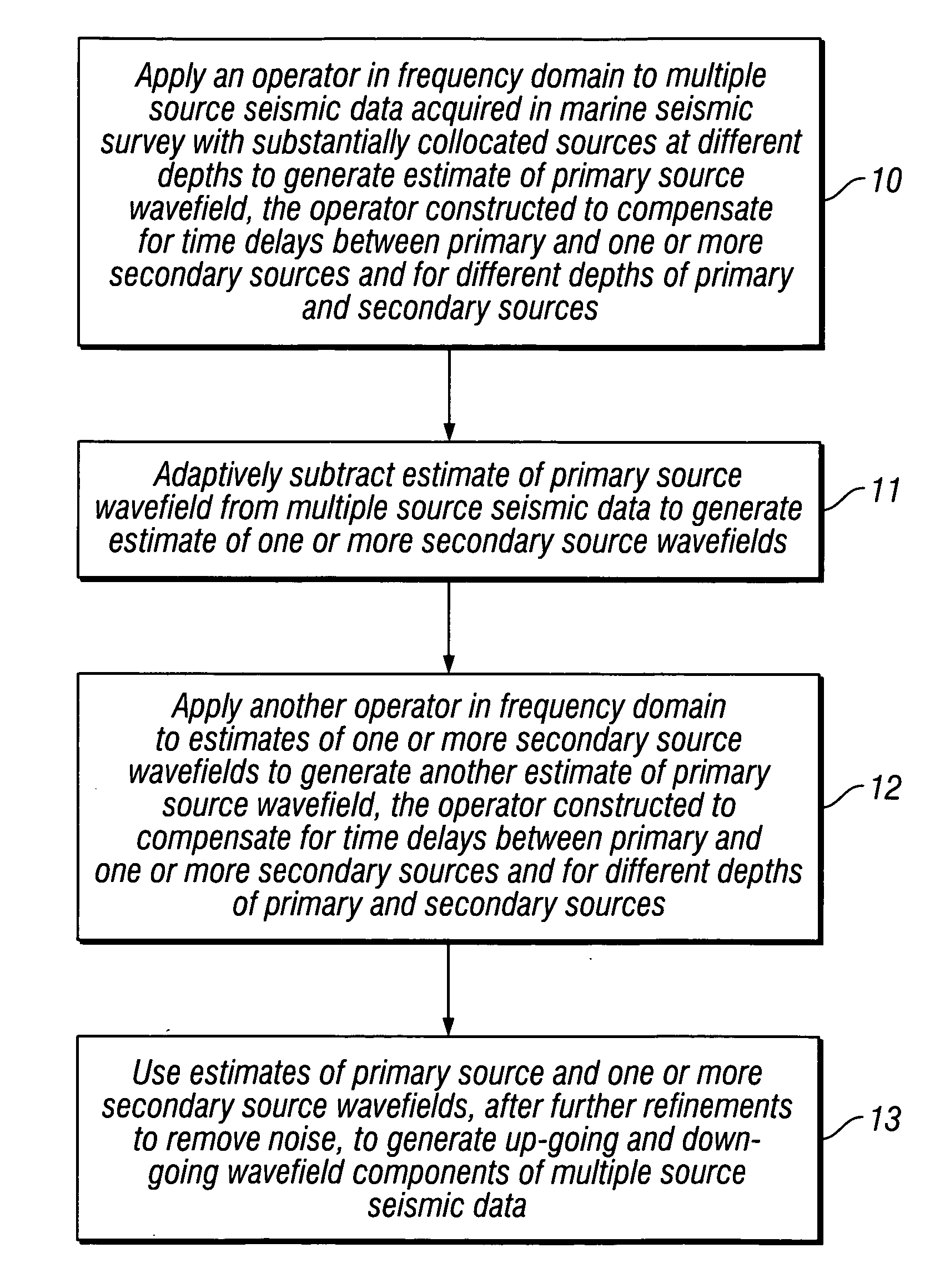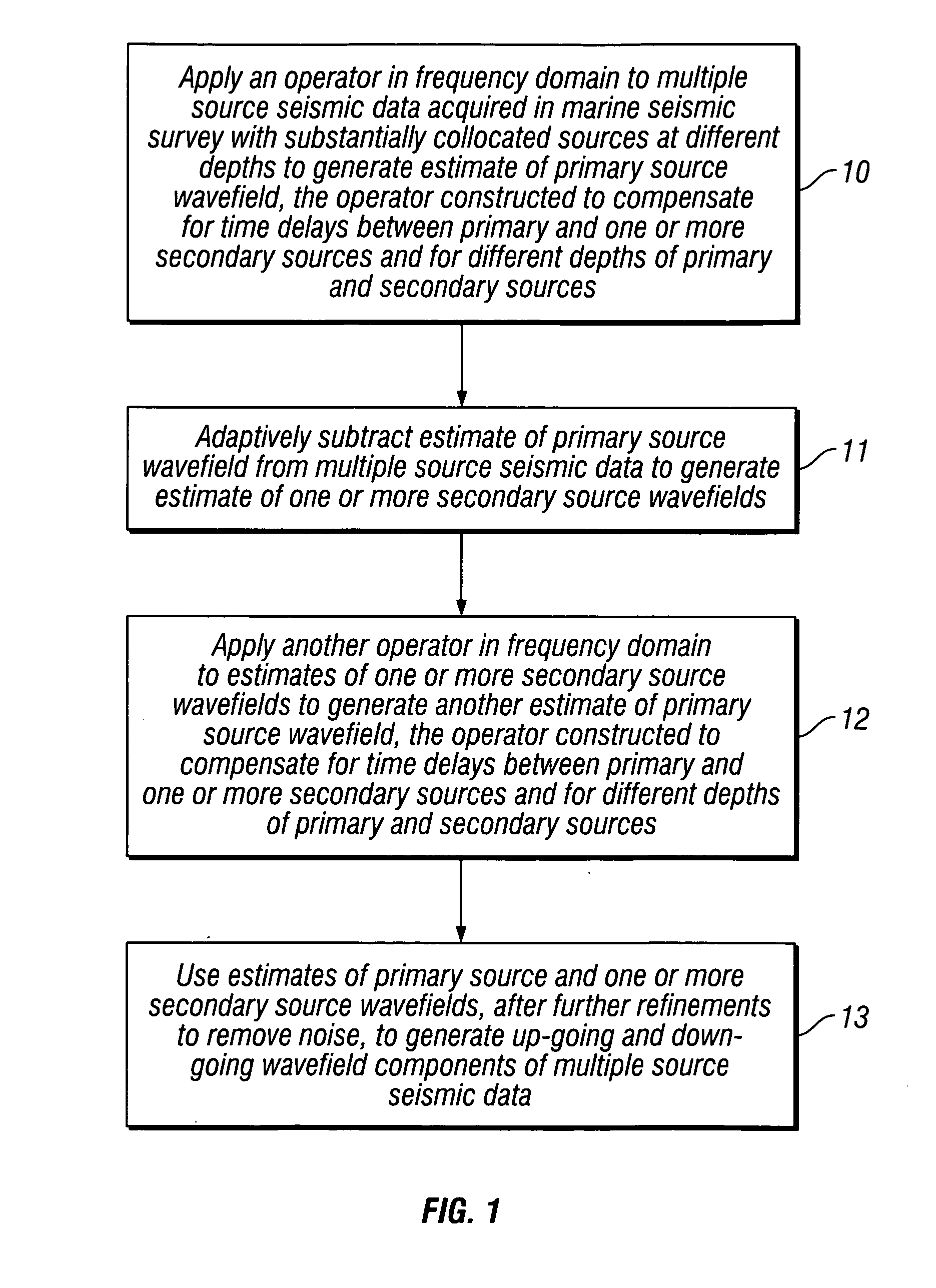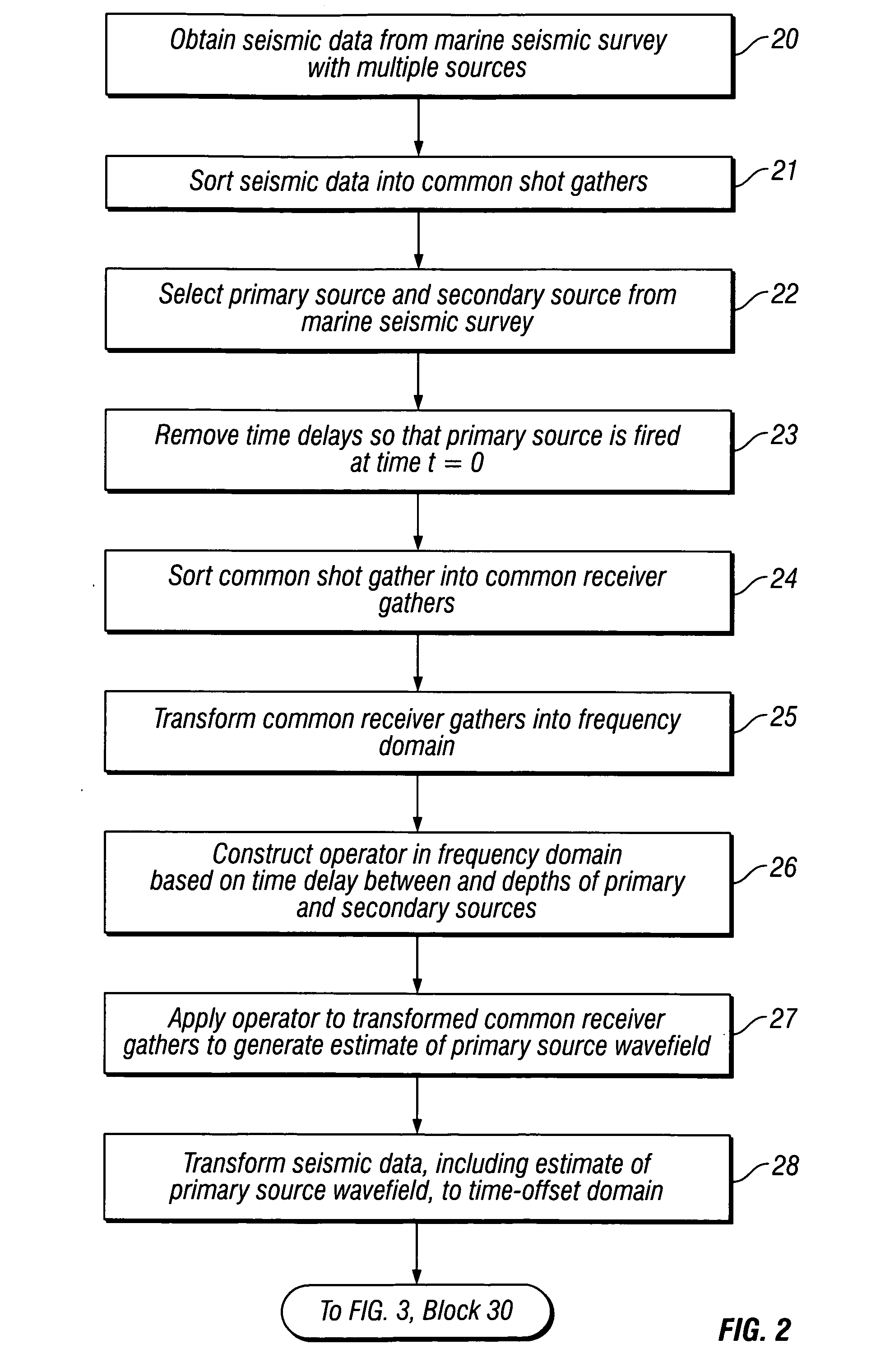Method for separating seismic sources in marine seismic surveys
a technology of seismic survey and source separation, applied in seismology, seismic analysis of water-covered areas, instruments, etc., can solve the problems of interference reducing the bandwidth of recorded seismic signal, differences in acoustic impedance at the interface, etc., and achieve the effect of removing nois
- Summary
- Abstract
- Description
- Claims
- Application Information
AI Technical Summary
Problems solved by technology
Method used
Image
Examples
first embodiment
[0030]Once an estimate of the primary source wavefield has been obtained, this estimate can be refined. Two embodiments of the method for refining the primary source estimate will be presented here, but the method of the invention is not restricted to these two embodiments alone. In the first embodiment, the secondary source wavefield can be derived through (adaptive) subtraction of the estimated primary source wavefield from the original dual source measurement. After that, both estimates can be updated. In one embodiment, pre-conditioning is applied to the secondary source measurement to remove any unwanted noise. This estimate of the secondary source measurement is used to compute a new estimate of the primary source measurement by applying an operator to the estimate of the secondary source measurement, using Equation (11). This new estimate of the primary source measurement is then adaptively optimized again such that subtraction from the input data would lead to minimum energy...
second embodiment
[0031]In the second embodiment for refinement, the estimate of the primary source measurement and the estimate of the secondary source measurement are subtracted from the dual source measurement to generate a residual. The residual is given by:
{tilde over (R)}(sα1,sα2,x3S1,x3S2;s)={tilde over (P)}Dual(sα1,sα2,x3S1,x3S2;s)−{tilde over (P)}Primary(sα1,sα2,x3S1;s)−{tilde over (P)}Secondary(sα1,sα2,x3S2;s). (12)
[0032]Then, the process starts again and the new residual estimate from the next iteration is added to the previous iteration results. In particular, the two embodiments use the operators described above.
[0033]The method of the invention applies to multiple source seismic data, not just dual source seismic data, as illustrated above for purposes of showing the principles clearly. The method of the invention applies equally to one or more secondary sources. Thus, there can be, in general, N-1 secondary sources positioned at depths x3=x3Sm, for m=2, 3, N, with corresponding wavef...
PUM
 Login to View More
Login to View More Abstract
Description
Claims
Application Information
 Login to View More
Login to View More - R&D
- Intellectual Property
- Life Sciences
- Materials
- Tech Scout
- Unparalleled Data Quality
- Higher Quality Content
- 60% Fewer Hallucinations
Browse by: Latest US Patents, China's latest patents, Technical Efficacy Thesaurus, Application Domain, Technology Topic, Popular Technical Reports.
© 2025 PatSnap. All rights reserved.Legal|Privacy policy|Modern Slavery Act Transparency Statement|Sitemap|About US| Contact US: help@patsnap.com



